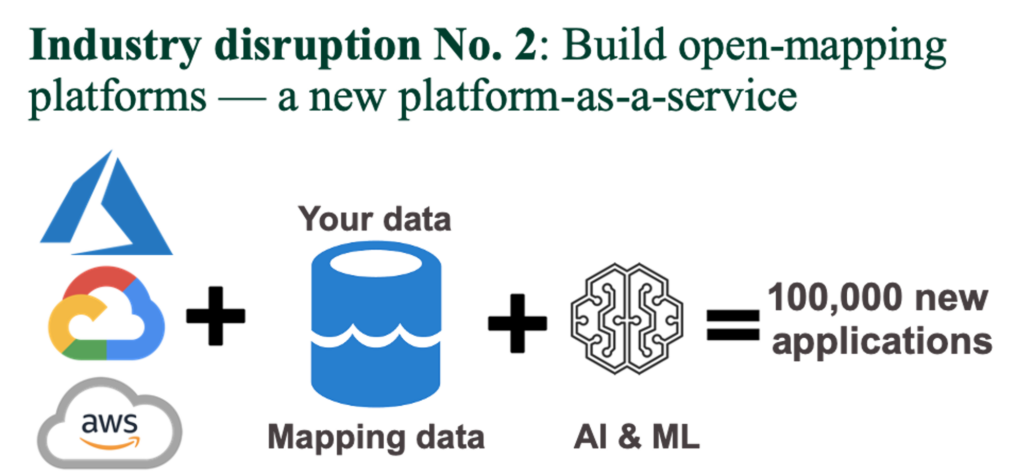Apple Breaks The Shackles On Mapping Data
When Apple launched Apple Maps in 2012, it didn’t go so well. The launch wound up on the show Silicon Valley as an example of just how badly a launch could go. Part of the challenge is that Apple was forced to rely on third-party mapping data providers. Things didn’t work out so well.
And they never could have with that approach. The complexity of downloading and managing mapping data from many suppliers just doesn’t scale. It wasn’t really Apple’s fault. It’s a broken architecture borne of 50 years of extensions and stitched together in two waves over the last 50 years, even as the volume and criticality of the mapping data have exploded. The only recourse for Apple, and for Uber’s driver and passenger apps, and for John Deere’s precision agriculture, and for Waymo’s self-driving cars, is to own the entire stack of data yourself. And that’s what Apple has now done with its latest Maps.
Having to download and manage the rapidly changing mapping data is a ridiculous architecture in cloud world. And it’s completely broken as an approach to build applications for the physical future of business: the internet of things, augmented reality, self-driving cars, location intelligence. It shackles any innovation for the real world.
Apple realized this in 2010 as it got tired of paying Google for maps. It just didn’t realize how long and how expensive it would be to dig out. We estimate that Apple spends $1 billion every year on mapping data to break free of the shackles of a mapping data provider. (We estimate that Google spends $2 billion.) So it went its own way, and the results were painful at first, though much better now, at least in the United States.
This can’t last. We propose a new industry architecture that puts curated mapping data in the cloud and gives everyday companies that ability to overlay their proprietary data on top of the data stack to run algorithms and create custom and differentiated solutions. Apple was forced to do it itself (for very good reasons, including protecting consumers’ privacy).
- Google could do it tomorrow by combining Google Maps, Google Cloud Platform, and secure data partitions that a company can use to run machine learning against to find the breakthrough insights and execution. But it hasn’t. (We think the Google ad opportunity, forecast to be $11 billion in ad sales in 202X, has distracted it.)
- Apple won’t want to open up its own stack, though its aspirations in augmented reality might push it to open up its location stack.
- We believe Microsoft, with its Azure IoT and Azure Maps strategy, may be the first to create an open mapping platform. But it would have to buy TomTom to make it credible at cloud scale. Amazon will be forced to respond, as will Alibaba, IBM, Salesforce, and other cloud providers.
Read more here. Forrester clients can read the report or infographic and join me in a webinar on February 11.

